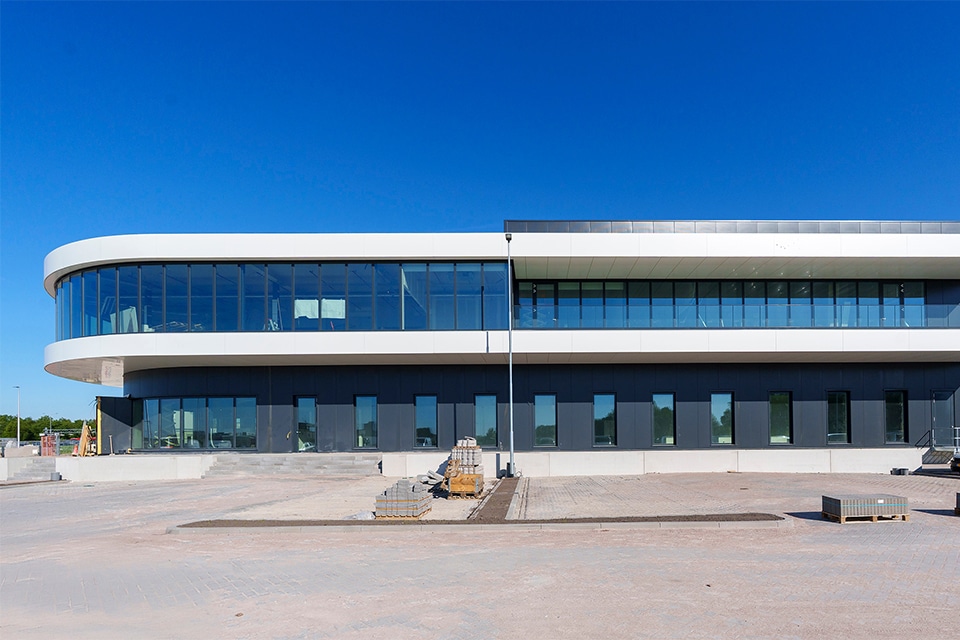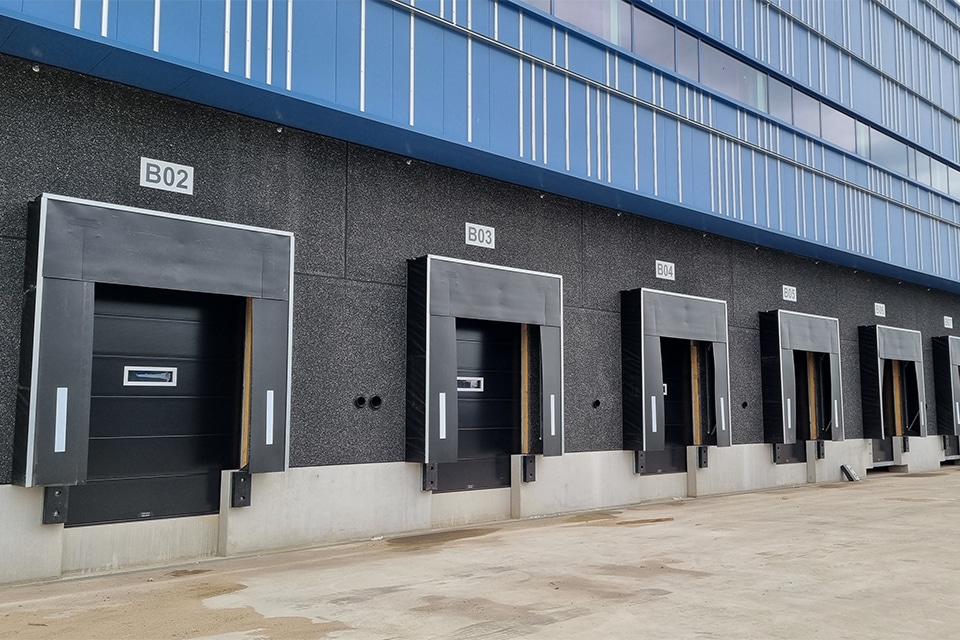
A fresh look for WDP Prinsenhil Logistics Park
A remarkable approach for a multi-tenant distribution center in Breda: WDP Prinsenhil is one of the first warehouses to pay tremendous attention to natural forms and landscaping. "The beginning of an evolution," Peter Couwenbergh of Convex architects and Paul van Wijk of Stijlgroep call the project.
Couwenbergh, principal and architect at Convexarchitects, calls client WDP a forerunner in sustainable project solutions. "Damnation is a big social discussion. The problem with many warehouses is that they are not fitted into the landscape." Project developer Martijn Sleutjes of WDP, market leader for logistics real estate in the Benelux, wanted to do things completely differently for this redevelopment of industrial estate 'De Krogten', and to do so he attracted Convex Architects as well as landscape architect Stijlgroep, in addition to an ecologist.

This is the first time that these parties have worked together so early in the process. "That was extremely pleasant," Couwenbergh believes. "It is very important to fit a building into its surroundings. Working with a landscape architect right from the start felt like an incentive to do that even better."
Deviating from the 'standard box'
A second aspect in the discussion of dumbing down is the form of warehouses. "They are called boxes for a reason," Couwenbergh continues. "That's why we also strove for a more plastic, more human building."
WDP wanted to create a friendly building that blends seamlessly with the natural environment, with an eye for biodiversity. This resulted in a design with more plasticity. A lowered front reduces the visual mass of the building. Rounded corners give it a softer look. Earth tones, green facades and roofs complete the look. The office sits curled around the building to give it the same architectural quality. The side façade extends into a curve, with more and more glass.
Architecture in the landscape
Landscape architect Van Wijk also experiences it as an incentive to think along directly. "The building meets the BREEAM requirements, but together with WDP and an ecologist we decided to add a few more scoops to that," he says. "We are creating as much space as possible in the landscape for biodiversity. Think nesting areas, hiding places or foraging areas for small fauna and birds. This environment is very significant ecologically." His landscape design integrates the building's circular architectural theme into its surroundings. The site will be planted with about a hundred native trees and thousands of shrubs. Green facades and fencing, grass-herb sedum roofs, permeable pathways, parking lots and numerous wadis will help infiltrate rainwater into the ground and prevent drought or heat stress.
The first part of this distribution center was completed in April: both the construction and the outdoor space. Van Wijk: "Of course it will still be much greener, but you can already see geese nesting near the wadis. They knew how to find it right away."
Pleasant work in a green environment
Not only does nature benefit: WDP is also a forerunner in facilitating a pleasant working environment within this type of property. Couwenbergh: "We lowered the roof above the work area. At the jump to the storage roof, we made a transparent strip. We also included transparent strips in the side walls. That gives a lot of daylight in the work area. The windows on the work floor, in the office and in the warehouse offer views of the green landscape of Style Group." Van Wijk: "Client WDP has a strong vision. In consultation, we provided a route around the building with lunch and work areas in the greenery. Fully equipped: there are even connections to charge your phone or laptop."
Evolution in distribution center design
A stronger emphasis on landscaping and warehouses with a human touch: that, according to both gentlemen, is the new trend. "The pressure on warehousing is great," Couwenbergh continues. "We cannot do without it, but we have to take care about placement and architectural expression. Especially since the scale of distribution centers has increased enormously." Van Wijk adds: "We are also increasingly seeing these types of environments being used to decongest existing residential environments. For example, by creating a park-like environment with large retention basins for rainwater."
The gentlemen see a new direction for developers. "It's an evolution. WDP is certainly a forerunner, but throughout society and in the industry you notice the urgency to deal with these kinds of buildings differently."
- Client WDP
- Architect Convex Architects and Style Group
- Contractor Wijnen Construction




